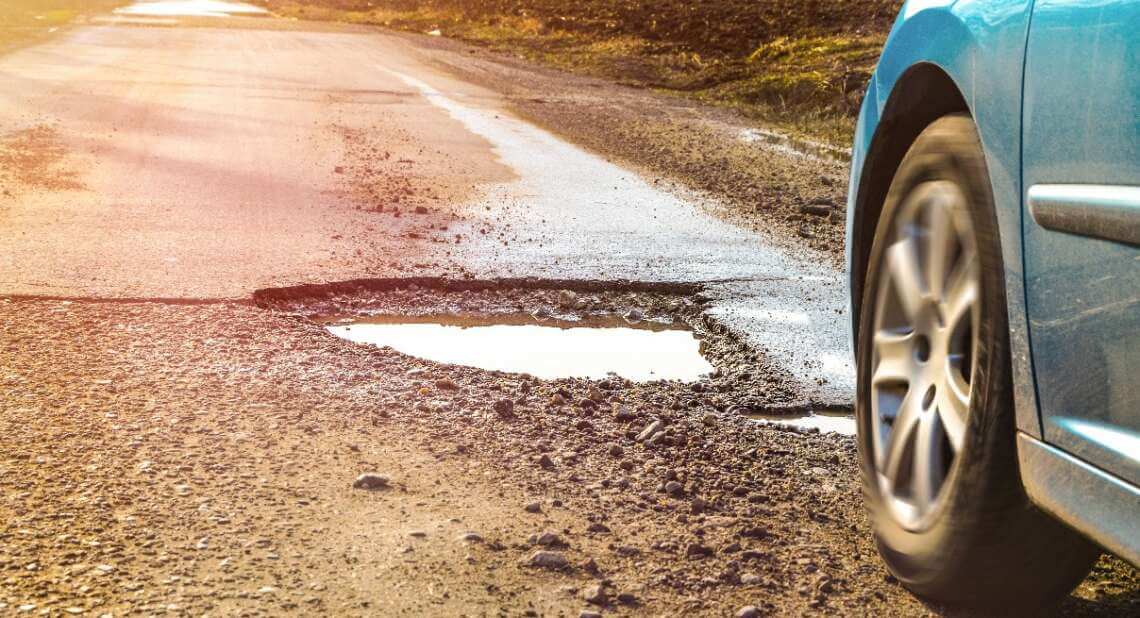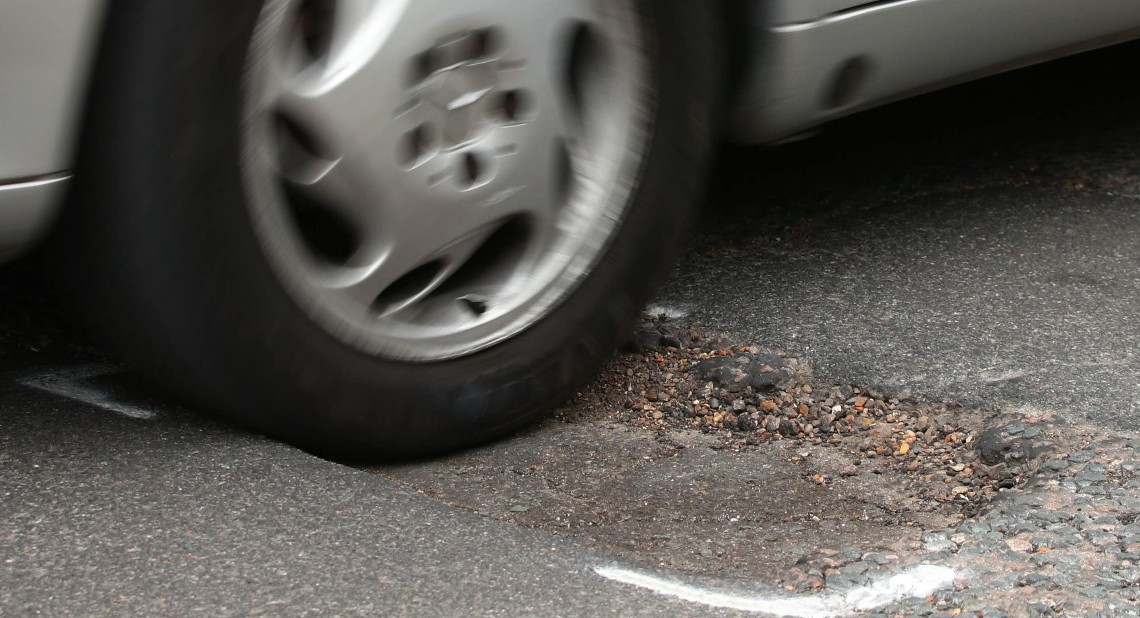If you’ve started to think that you’re seeing more potholes on the roads as you drive, it may not just be your imagination. Recent figures show that the number of potholes on UK roads recently reached a five-year high, increasing the danger to drivers, but also to cyclists and pedestrians. To help you understand what causes potholes, how they can put your safety at risk, and how to stay safe on our pothole-laden roads, this guide breaks down all you need to know.
What is a pothole – and why does it occur?
A pothole is a large hole or depression in the surface of a road, caused by bad weather and traffic wear. Potholes are created when water seeps through cracks in the road, collecting beneath the surface and softening the road’s base. When that water freezes, it expands and forces the road surface up. When the water dries, it creates a hole beneath the road’s surface which weakens and eventually collapses when traffic drives over it. This creates a pothole, which is made larger as traffic continues to drive over the surface. The age and condition of a road make it more susceptible to potholes, as does the UK’s wet and cold climate.
How many potholes are there in the United Kingdom?
There are somewhere between 1 to 2 million potholes on UK roads, though the number varies from season to season and region to region. Recent figures showed Derbyshire to be the worst-hit county in England, having had more than 90,000 pothole reports. The figures show that every county and region of the UK has been significantly impacted by potholes. The RAC Pothole Index has tracked pothole call-outs since 2006 and reports that drivers “are now 1.6 times more likely to break down due to the repeated wear caused by potholes than they were 17 years ago.”
What damage can potholes do to a car?
The danger to your car is dependent on a number of factors, including the speed you are travelling, the angle at which you make contact, and the size of the pothole – larger, deeper craters are likely to cause more damage. The most common damage includes tyre punctures and blowouts, wheel and suspension damage, and exhaust and undercarriage issues. Hitting a pothole can also affect a car’s steering system, putting a driver’s safety at significant risk.
How to report a pothole problem?
The RAC has partnered with the website and app FixMyStreet to make it quick and easy to report any pothole you see. Visit FixMyStreet and you will be able to report a pothole, with that report sent to your local council. It’s also possible to report potholes via Gov.UK.
How do you avoid driving over potholes?
Avoiding potholes completely may not always be possible, particularly if driving on unfamiliar roads and/or in darker conditions. You can check in advance for any reported potholes across the UK on FixMyStreet and FillThatHole. To minimise the damage caused by potholes, you’re advised to follow the three following rules.
-
Keep your tyres in good condition
Tyres kept at the correct pressure give extra protection against pothole impacts and minimise the damage. The correct tyre pressure for your car should be located behind the driver’s door, under the fuel cap, or in the owner’s manual. A regular service is included in your Motability lease package and will keep the rest of your car – including the lights, windscreen wipers and washer fluid – in good condition and allow you to drive safely.
-
Drive safely
Safe driving applies to any journey but it’s particularly helpful for avoiding potholes. Drive at a sensible speed, allowing the vehicle in front sufficient space. This will give you time to react should you see a pothole, but also allow you to slow down safely – driving over a pothole at a slower speed is easier on your tyres and suspension. Also, try to safely avoid driving through puddles, as potholes often lurk beneath patches of water.
-
Keep a firm grip
If you have no choice but to drive over a pothole, if possible keep a firm grip on the steering wheel to remain in control of the car; hitting the defective surface head-on is usually less damaging than making contact at an angle. It’s vital not to brake or swerve suddenly – you will put yourself and potentially other road users at risk by doing so. Try to remain as calm as possible and maintain a consistent speed until you are beyond the pothole. If you think your car has been damaged after driving over a pothole, pull over safely before inspecting any damage and, if required, call for RAC assistance, which is included as a part of your Motability lease.
How do you make a claim for pothole damage?
If your car is damaged by a pothole, it may be possible to claim compensation, though this will often depend on whether the pothole has already been reported. To make a claim, you will need to address it to the correct authority as soon after the incident as possible. You can find details of who to contact here. However, be aware that Motability Scheme customers are covered against pothole damage by Direct Line Motability – you can find further details at Motability.co.uk.
Related articles
Your guide to safe winter driving
Car safety technology: 10 top techs for safer driving
How to avoid your car tyre bursting – and what to do if it does
![]()





